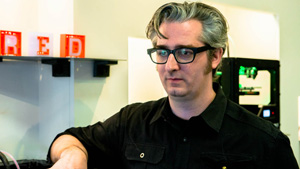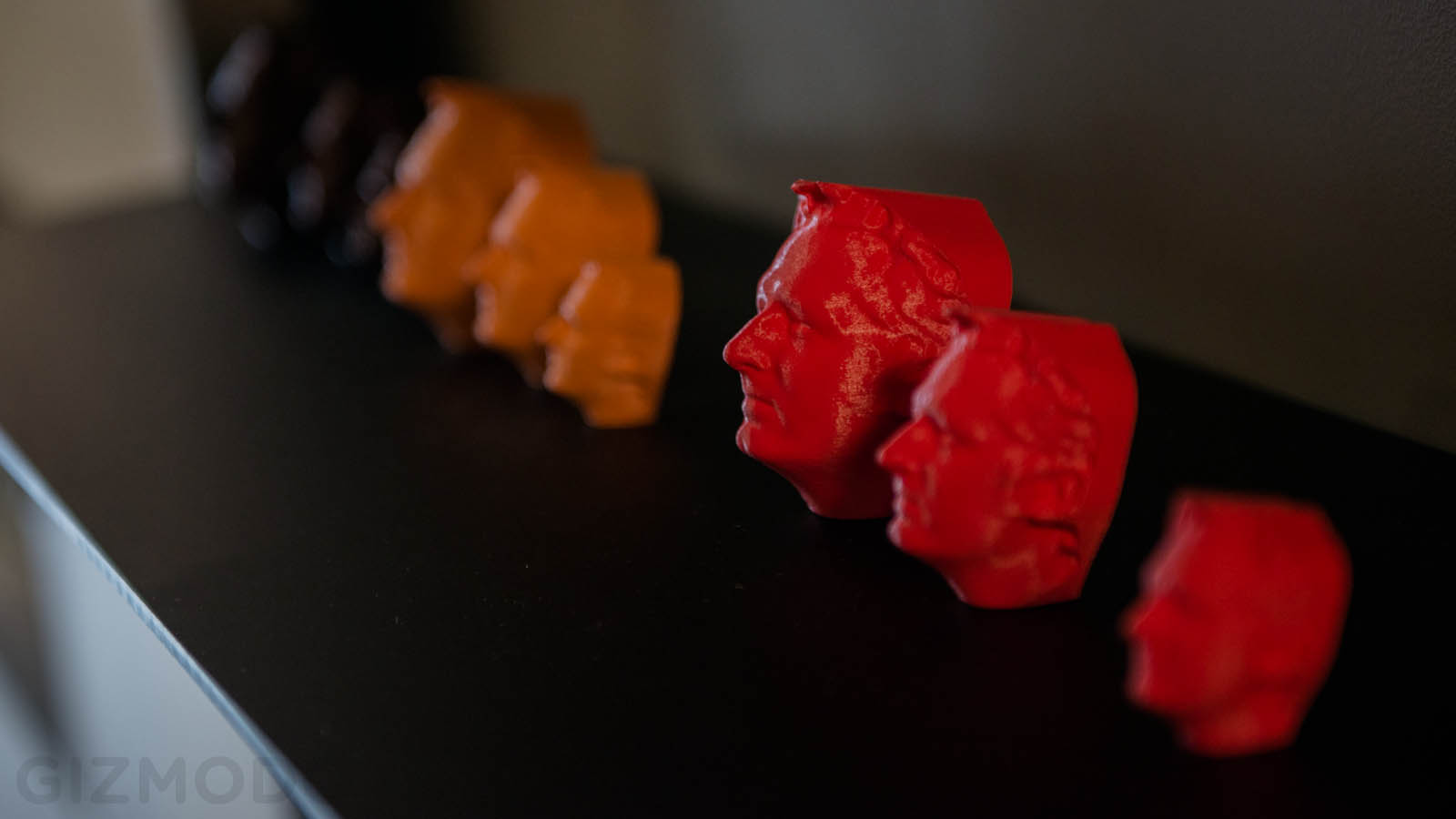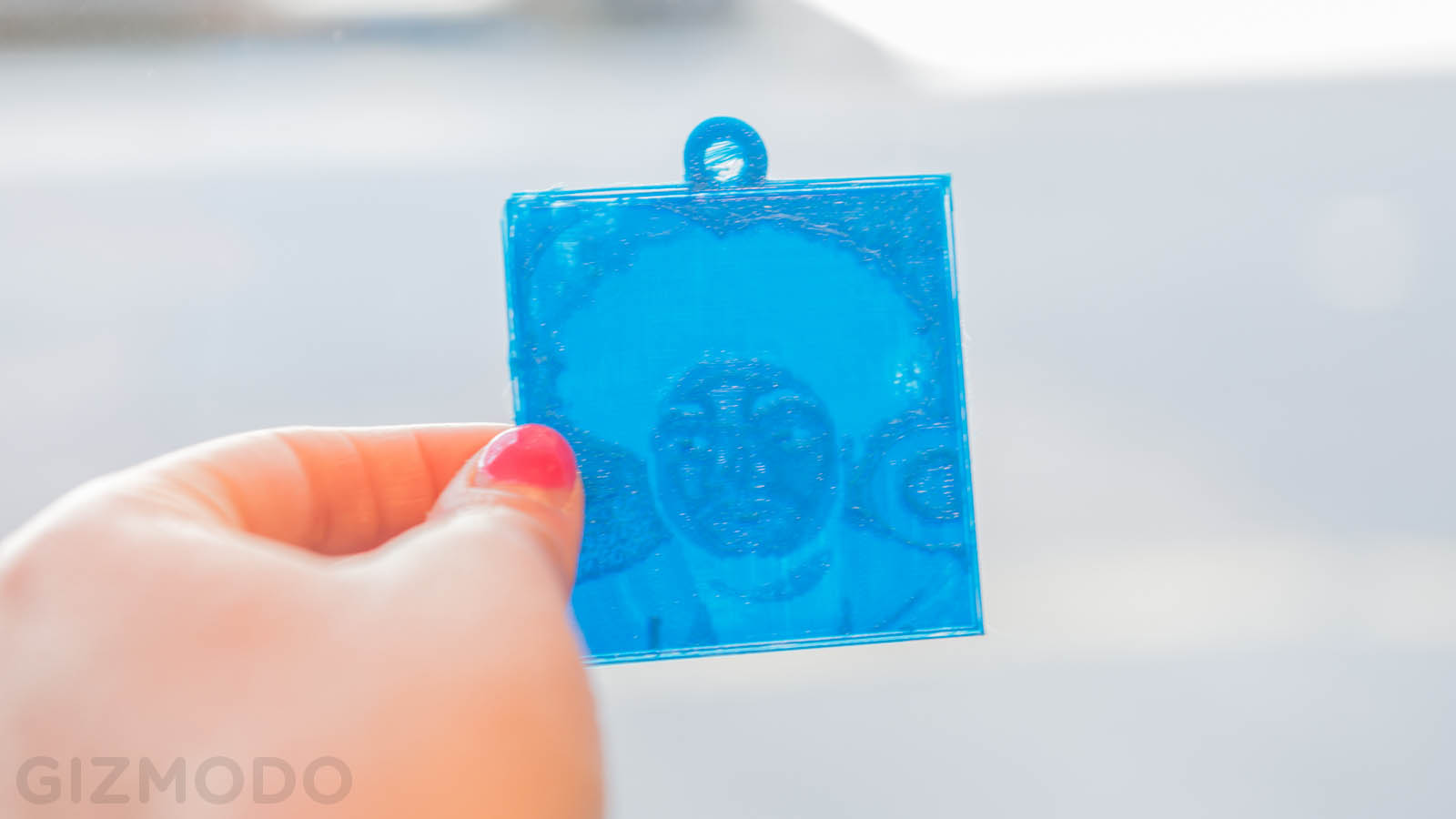You can 3D-print just about anything, from dresses to snowboards to a human face. A big part of the reason 3D printing is closing in on the mainstream is thanks to MakerBot, which is equipping anyone with an imagination — and $US2200 for a MakerBot Replicator — to print the physical manifestations of their dreams.
MakerBot was one of the first companies to bring an affordable 3D printer to the market. By affordable, we mean compared to industrial options, many of which cost the same as a gently-used Honda. Better yet, MakerBot has built a community around the 3D printing — Thingiverse is MakerBot’s version of GitHub, where you can find plans for all kinds of printable products like fishing poles or toy cars, and a total of 80,000 different things.

MakerBot helped transform 3D printing into something people are using to do incredible things in science, health, technology, and just general tooling around . We met up with founder Bre Pettis at the Makerbot Store recently to chat about what makes 3D printing so amazing and so pertinent.
Gizmodo: Sure 3D printers have gotten cheaper, but when do you think we’ll reach a point when they’re affordable enough for everyone to have one in the home?
Bre Pettis: Well do you have a laptop? Most people have a laptop. When did they get to the point when they could afford a laptop? How much is your laptop? $1000. Unless you check any boxes for [added bells and whistles], it’s like a thousand dollars. Part of that is people haven’t started the process of thinking because it’s still new, you know, only 20,000 people are in the club so far or thinking “ohh in a couple years I’m gonna need a new Makerbot.” Many of our customers are e-customers, so it’s a similar experience. and once you have one, you can’t live without it.
Gizmodo: It seems like we see a certain set of people who are interested in buying a Makerbot. Do you see the machine becoming more of a universally desired thing?
Pettis: Right now creative people use them. They’re creative people who get them independently and built cool stuff or make small businesses out of them, entrepreneurs. Or like, our biggest customer is NASA. Engineers, industrial designers, architects? When they see a makerbot and they see what comes off of it, and then they see the price tag, they just buy it. Because they know that for them, to get this made by somebody it costs hundreds of dollars. But to make it themselves, it costs you dollars. So they just literally buy them.
At NASA, when you need a prototype, you can either send it out to get made by a service, and if it’s going to cost more than a MakerBot, they just buy you a MakerBot. What the timing is is it’s still early days for the leading edge, cutting edge consumer, but in the industry world, people are already there. They see the price tag they just have to buy it.

Gizmodo: So how do you combat that challenge with normal folks?
Pettis: One of our biggest challenges is actually education and awareness. Getting people to understand, first of all what a 3D printer is — it’s a machine that makes you things — and what it can do for you — it can make you pretty much anything you want within certain parameters. That challenge for us is, we’re dedicated to building infrastructure for creative people, to make anything. And as part of that we have to educate people so that they know what’s possible.
Gizmodo: Let’s talk a little bit about the materials you use.
Pettis: We’ve got a couple of materials we use — ABS and PLA. ABS is a material that’s like a traditional thermoplastic, it’s what Lego is made out of. PLA is our new favourite thing. It shows you what you can do and how flexible it is.
Gizmodo: It’s super easy to 3D print guns. And that’s caused a little bit of a controversy, considering plans for many types of firearms — including an AR-15 — were available on Thingiverse. They’ve since been banned. How have you guys been dealing with the backlash, if any?
Pettis: We’re dedicated to creating tools for creative people to do amazing and positive things. So what ended up happening is we’ve got terms of service on our site that say no weapons on Thingiverse, and once we put a button up there that let people flag things as innaprporiate, they all came down because that was the terms of use. That’s just one of the things that happens when you have a website. You have terms of use and you have to figure out how to deal with that. It’s one of those things where there’s so many creative things going on right now. Focusing on that is kind of boring right now.
Gizmodo: Let’s talk about some of the projects you’re most excited about.
Pettis: We’ve got this amazing project, the RoboHands project. There are these two guys, they live on opposite sides of the world. They started off and this guy wanted to make — he lost some fingers in an accident, and he made replacement fingers for his hand. and then they thought, kids don’t have prosthetics because they grow too fast and they’re like 10k dollars sometimes, even for just a finger. So they started making replacements — what they call RoboHands — for kids. There is a disorder called Amniotic Band Syndrome where kids are born without fingers. So then the robo hand lets them use this motion to close robotic fingers. So they can catch balls, they can do all sorts of cool stuf, like shake your hand. When you see that kind of thing, well that’s the most powerful thing in the world.

The most exciting thing going on right now is the customizer, in terms of stuff the community is doing. We created a tool that lets people create tools. So that’s kind of meta. You can go on Thingiverse and you can go to a thing and people can create things that other people can customise. You can go and create a bracelet and choose what it says on the bracelet. You can have it say your name on it you can make a gift. We’ve got lithopanes. Lithopanes are so cool. So you upload an image, and it turns it into something that doesn’t look like anything until you hold it up into the light and then you see a picture.
Gizmodo: What makes Makerbot important?
Pettis: We’re empowering people to make their own things. For a lot of people deciding to be a designer, in their hear there’s all this barbed wire and challenges, and difficulty to become a designer. Our goal is to get people lots closer to being a designer and to build lots of bridges. The customizer lets anyone become a designer and customise things. and once yoiu do that it turns a switch on your head that says if i can do that then i can do this. It gets people that first step towards empowering them to make stuff.
When we started we were really the first ones to come out with an inexpensive 3d printer. When we started, we wanted one but they were like $US100,000. When we made it we were like, this is cool everyone should have one of these. And then we started a company. So for us it’s about leading the next industrial revolution.
